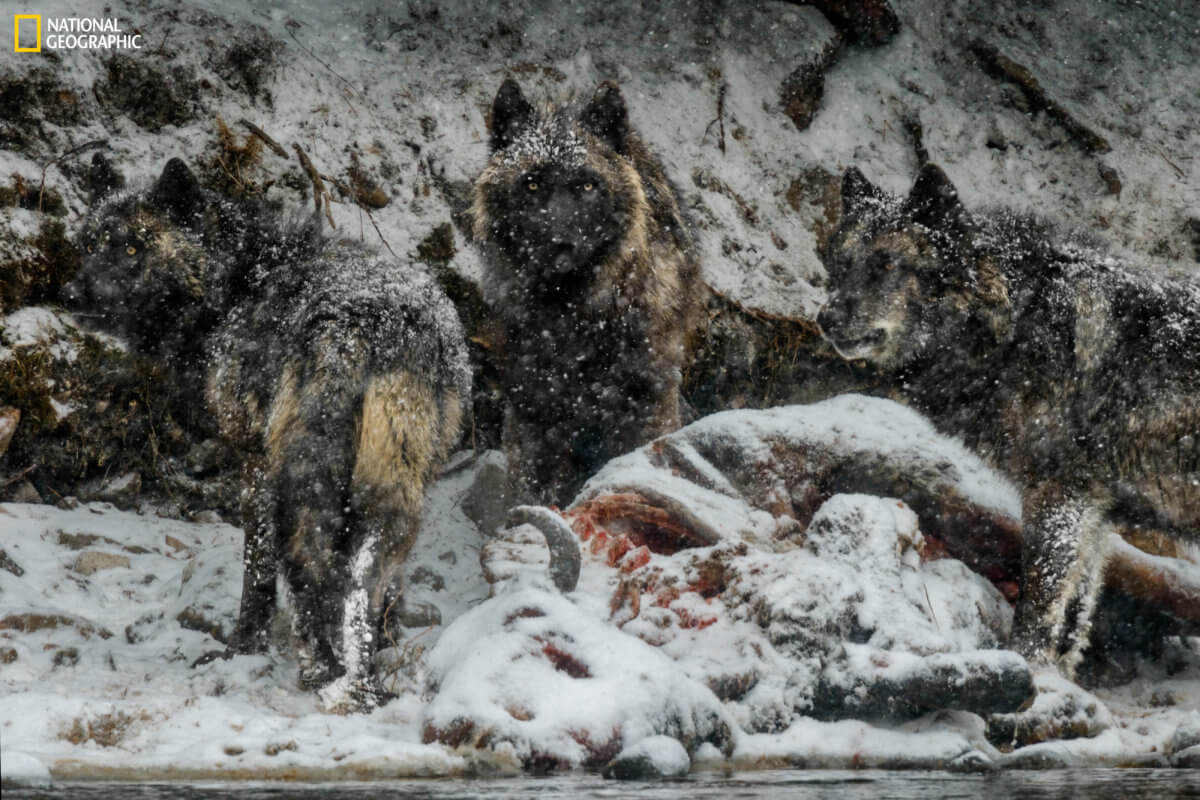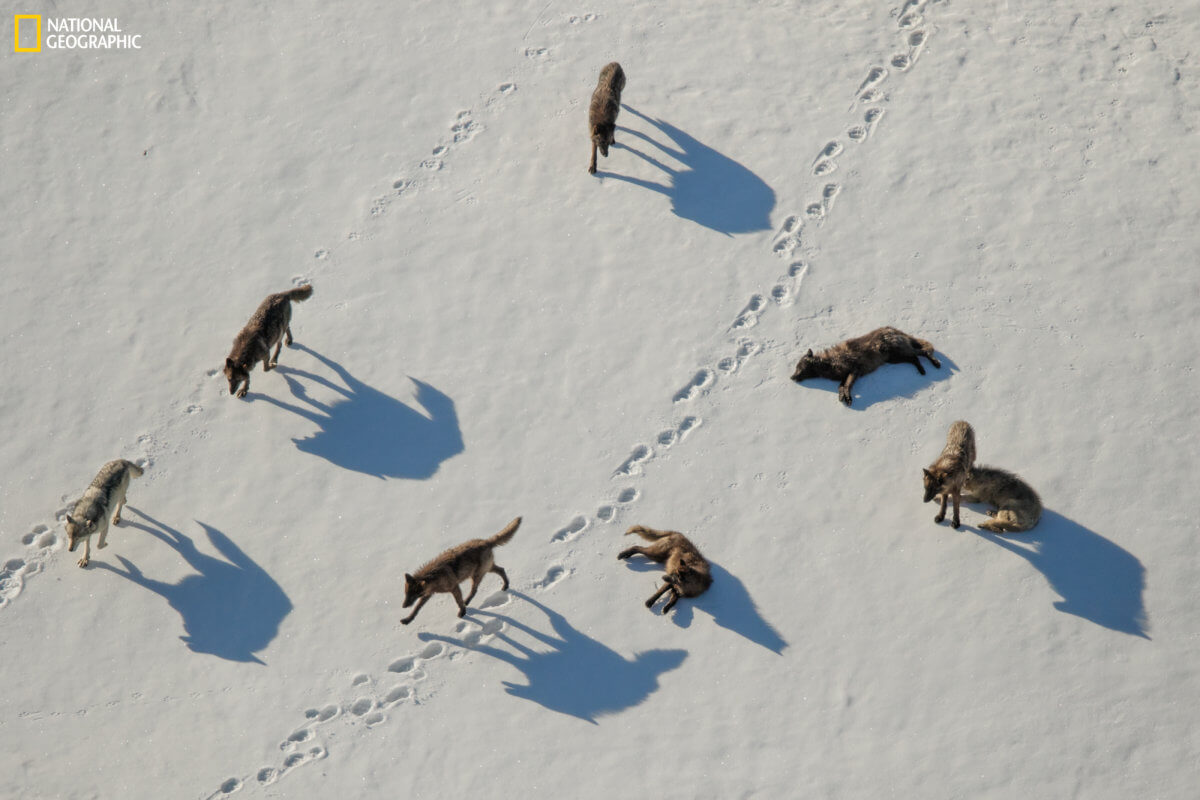Wolves: Photography by Ronan Donovan
November 5, 2022 - April 30, 2023Exhibition open November 5, 2022 – April 30, 2023
The National Museum of Wildlife Art will debut the traveling photography exhibition Wolves: Photography by Ronan Donovan, featuring Donovan’s stunning images and videos of wild wolves in the Greater Yellowstone Ecosystem and Ellesmere Island in the high Canadian Arctic. Since 2014, National Geographic Explorer and photographer Ronan Donovan has examined the relationship between wild wolves and humans in order to better understand the animals, our shared history, and what drives the persistent human-wolf conflict.
The exhibition, created by National Geographic Society and the National Museum of Wildlife Art, will display images and videos—highlighting the contrast between wolves that live in perceived competition with humans and wolves that live without human intervention.
Wolves will introduce visitors to the daily lives of wolves in the Arctic—how they hunt, play, travel, and rest in one of the harshest environments on Earth—with unparalleled intimacy. By contrast, the wolves of the Greater Yellowstone Ecosystem are fearful of humans, making it nearly impossible to document their daily lives. One of the distinctions made clear in the images is the ability to see wolf pups in the Arctic, which allowed Donovan to document behaviors he had never seen in Yellowstone. Donovan attributes these differences to the fact that Arctic wolves rarely experience negative encounters with humans or view them as a threat—it’s like going back to a time when humans learned from wolves and subsisted on the same prey.
“Wolves are such a fascinating animal to me because of how complex their relationship is with humans,” Donovan says. “Wolves were the first animals humans domesticated some 30,000 years ago and they have lived alongside us ever since as guardians, workers, and companions. Yet as humans moved to more sedentary lives, raising what amounts to easy prey in the form of livestock, wolves have found themselves in conflict with humans.”
As wolves in North America are increasingly under threat due to recent extreme wolf-control laws, and humans continue to impinge on the land and food sources that these animals need to survive, Donovan hopes that his photos will provide people with a better understanding of these often misunderstood animals. He also hopes they will see wolves as they are: powerful, intelligent, social mammals that have evolved to live in family structures similar to humans.
“The way that a culture views wolves can reveal a lot about how a society interacts with their environment—is there a belief of power over animals, or is there a collective shared landscape?” Donovan says. “As a visual storyteller, my goal is to portray my subjects in their most authentic way by showing the challenges they face as well as the tender moments between family members in order to evoke a shared emotion that the viewer can connect with.”
Exhibition Survey
If you saw Wolves: Photography by Ronan Donovan at the National Museum of Wildlife Art, we would love your feedback! Help us shape future exhibitions at the Museum. The short survey below takes three minutes or less.








- 1
- 2
- 3
Staff Picks
Through May 10, 2026Curating this exhibit has been an exercise in collaboration, which is one of our core values at the Museum. We began by asking each staff member to make a short list of some of their favorite works in the collection. Then, the curatorial team took them to see a few of those pieces. We asked the staff to look for artworks that were not already on display and would not be part of any upcoming exhibitions. A person’s taste in art is so uniquely personal and individual to who they are. This exhibition is not only an opportunity for you to get to know our staff, but it is also a chance to discover new pieces in the permanent collection—or perhaps to see old favorites in a new light.
See the Exhibit- 1
- 2
- 3
Two of a Kind?
Through April 26, 2026This exhibition is an exercise in comparison. It invites visitors to consider pairs of artworks, drawn primarily from the Museum’s permanent collection, and contemplate the question posed by its title: are these artworks truly Two of a Kind?
See the Exhibit




